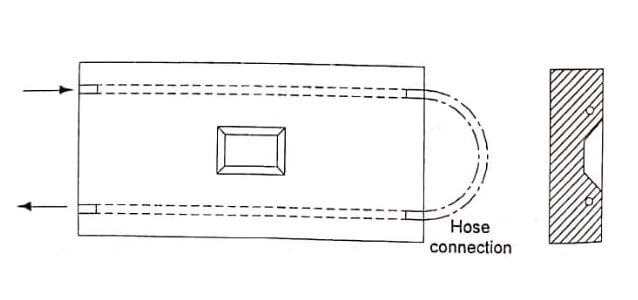Temperature of the molten plastic is an important factor to be controlled in injection moulding. The design of cooling system operating temperature of the injection moulding is affected by the following factors.
- Type of polymer used.
- Length of flow within the impression.
- Wall section of moulding length of the feed system.
- Number of impressions in the mould.
By taking into account of the above factor, normally, the operating temperature is kept in high range. The following are the consequences when the temperature of molten plastic is less.
- It affects the viscosity.
- There is a possibility of incomplete filling of cavity.
- There is a possibility of weld line in the surface.
- It increases the cycle time.
To overcome the above consequences, normally, the polymer melt is supplied with high temperature. When the temperature persists in the melt for long time, the solidification process is delayed which in turn increases the cycle time of the process. To facilitate the solidification process, cooling systems are provided in the mould in various locations. A sudden cooling of polymer melt will also lead to the defects, such as weld line. Therefore, to achieve an even cooling over the mould, a proper design of cooling system should be provided. Cooling system is provided to cool the following sections of the mould.
- Integer type mould plates
- Integer type core plate
- Bolster plate
- Cavity insert
- Core insert
- Other mould parts.
Cooling Integer Type Mould Plates
The temperature of the mould plate is controlled by circulating water through holes bored in the plate. The holes are normally interconnected to for a circuit. The circuit may be one level or more depend on the depth of mould plate. Figure below shows a simple integer cavity plate cooling.
Design of Cooling System Integer Type Core Plate
Cooling of integer type core plate is also similar to the cavity plate cooling. The water is passed through the holes machine on the plate. For shallow cores, a simple single level system of cooling is adopted, where the holes are situated beneath the core. For deep cores, the single level circuit is not sufficient to dissipate the heat. The following are the alternate cooling system adopted in situations where the core depth is high.
- Angle hole cooling system
- Baffled straight hole cooling system
- Stepped circuit
- Multiple circuit.







